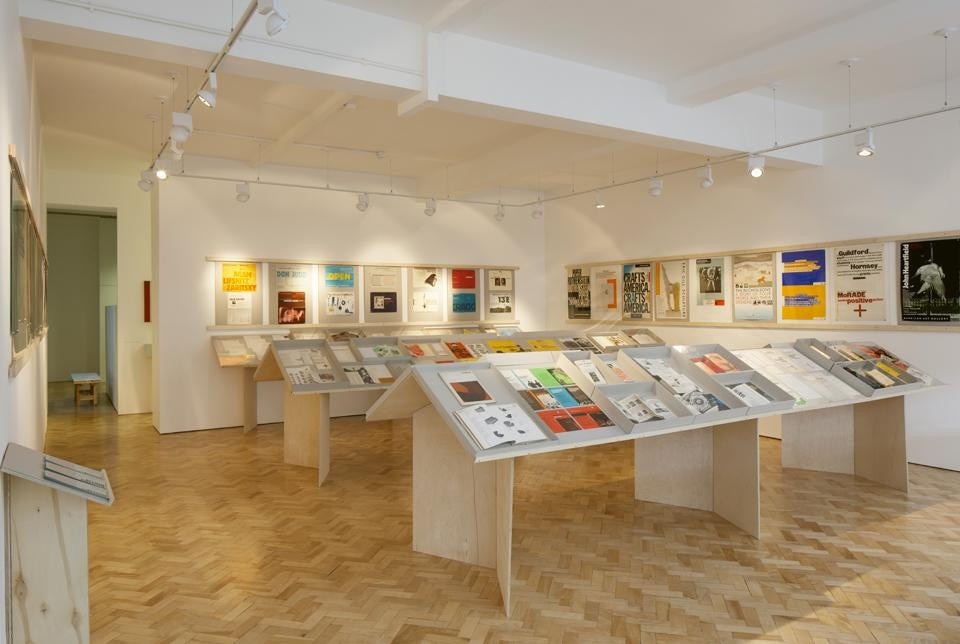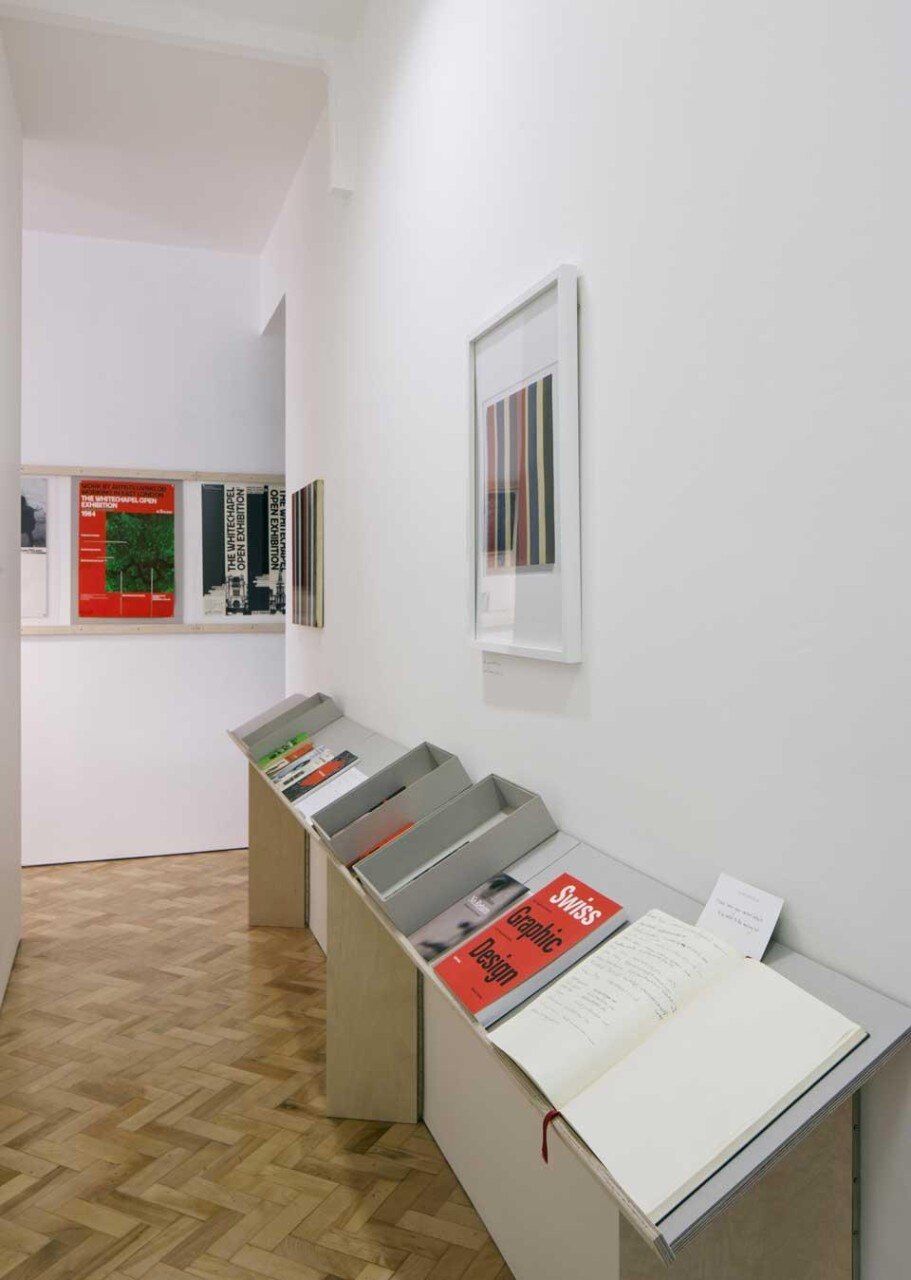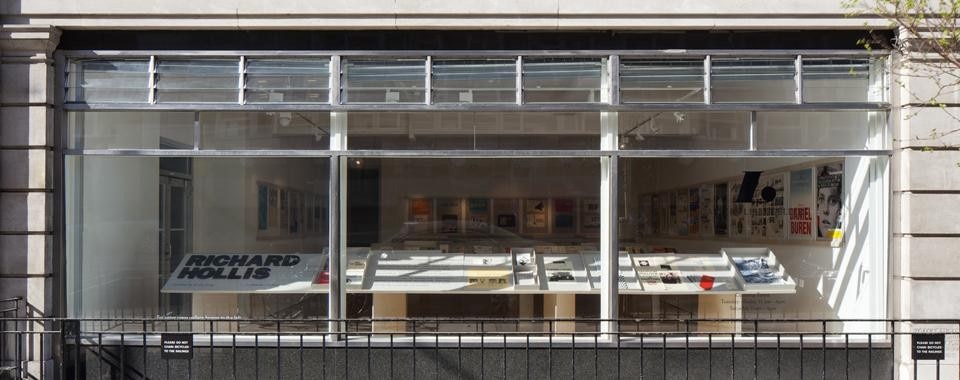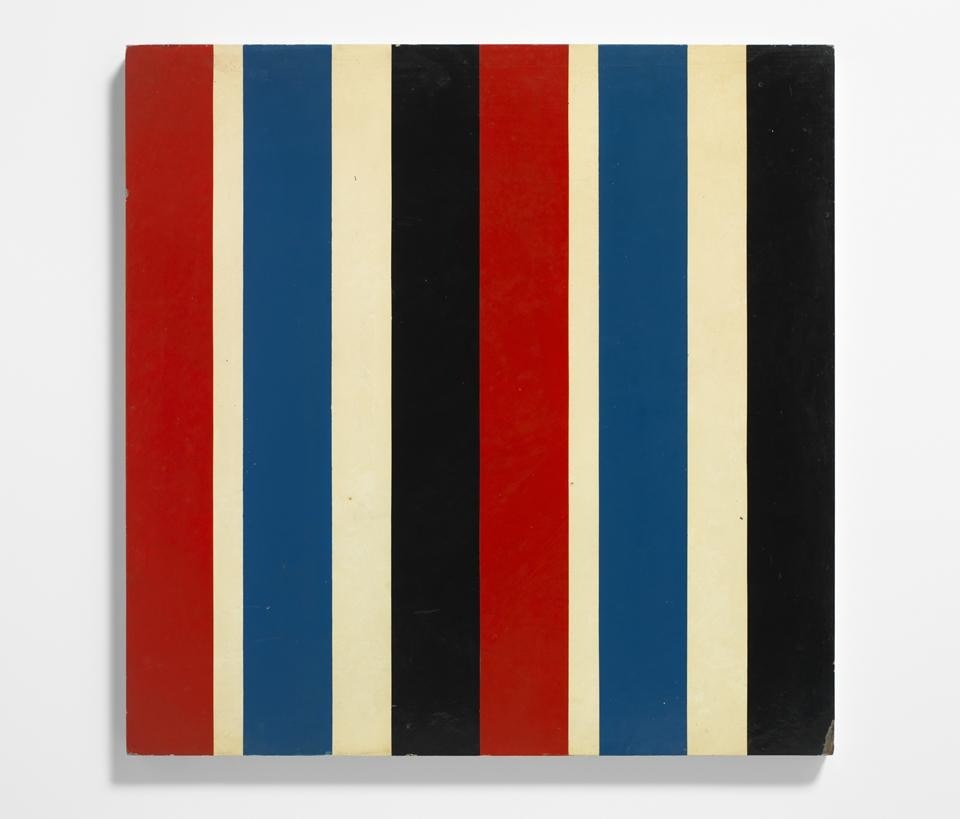This relative anonymity looks set to change thanks to the current exhibition at London's Gallery Libby Sellers, the first to be devoted to the designer. Consisting of over two hundred items drawn from Hollis's personal archive, including his books, letterheads and posters, personal correspondence and postcards, this is the first real insight into the designer's process, practice, and personal values. What it reveals is how closely connected these all are.
As much with of Hollis's work, the exhibition is a collaborative effort. Sellers had invited Emily King, a design historian specializing in graphic design, to curate a graphic-based offering to parallel the V&A's British Design summer show. The architect Simon Jones designed the exhibition, while the gallery guide is the work of the graphic designer Sara de Bondt. De Bondt is also responsible for About Graphic Design, a collection of Hollis's writings recently published by Occasional Papers.


Amongst the earliest items on display are photographs from his travels to Cuba and North Africa in the early 1960s. These trips, as well as those to Zurich and Paris, deeply influenced his work; both in terms of his early passion for Swiss Modernist design, as well as his engagement with the wider socio-political context. Hollis saw design as a "social service", and he lent his skills to a number of causes: the exhibition contains works for the CND, New Middle East and New Society magazines and for the leftwing Pluto Press. Amongst his designs for the latter was the book cover of Patrick Kinnersely's 1973 The Hazards of Work, whose use of tabloid-style typography and size — it was designed to fit into the pocket of a worker's overall — illustrated Hollis's desire to produce as accessible a text as possible.
Here is an exhibition permeated by Hollis's approach to design; one characterized not by style, but clarity of communication and what King describes as an "insistence on using text and image together to maximize meaning"

A significant proportion of the exhibition is given over to the collaborations with artists and art organizations that Hollis has long engaged in. Dominating the posters that line the gallery's walls are those that Hollis did for the Whitechapel Gallery from the late sixties to the early eighties, while the display cases contain Hollis's most recent collaborations, such as 2010's Queen and Country project with Steve McQueen.


Libby Sellers Gallery
Curated by Emily King
41-42 Berners Street, London
Through 28 April 2012


